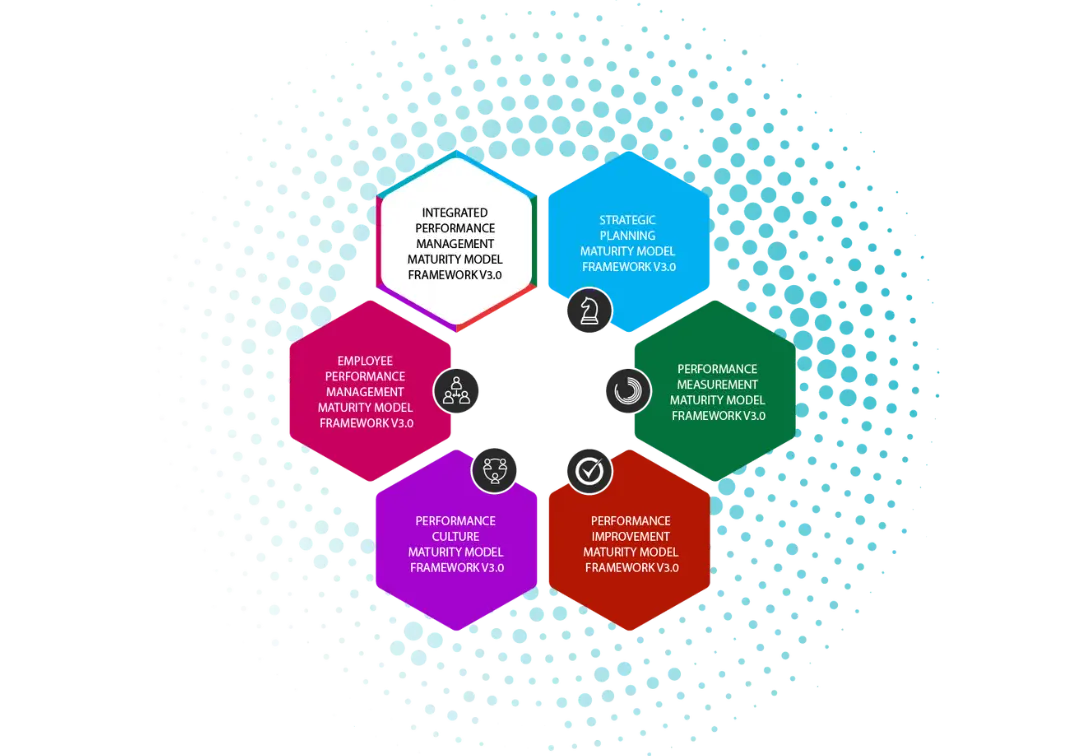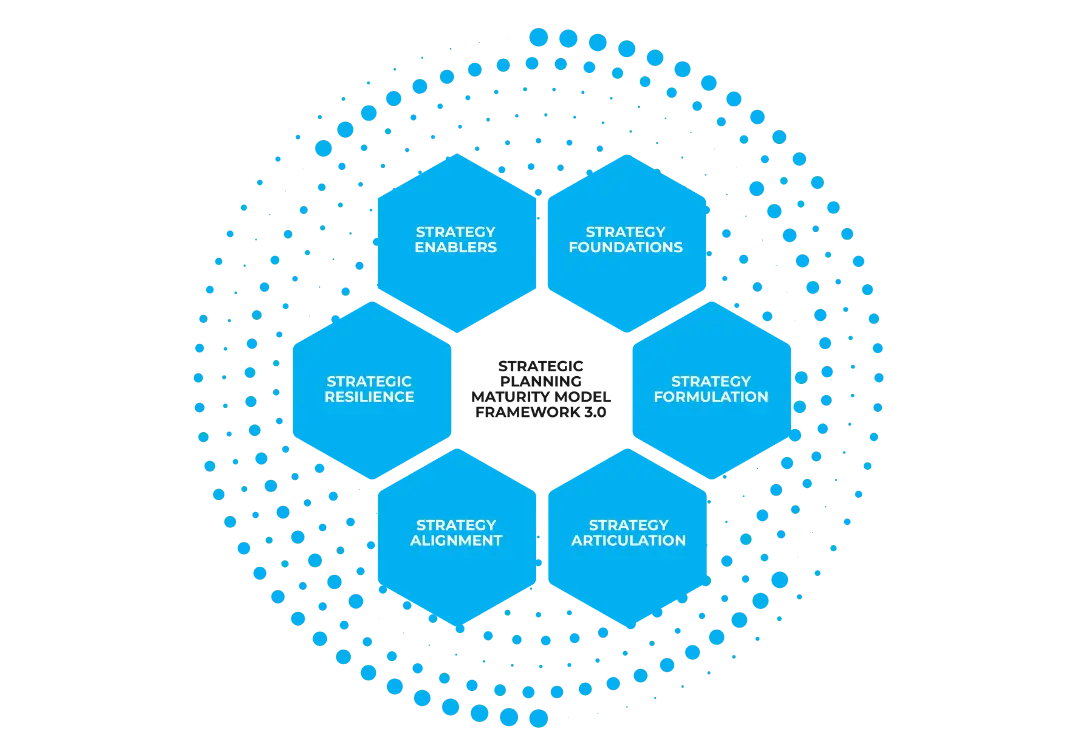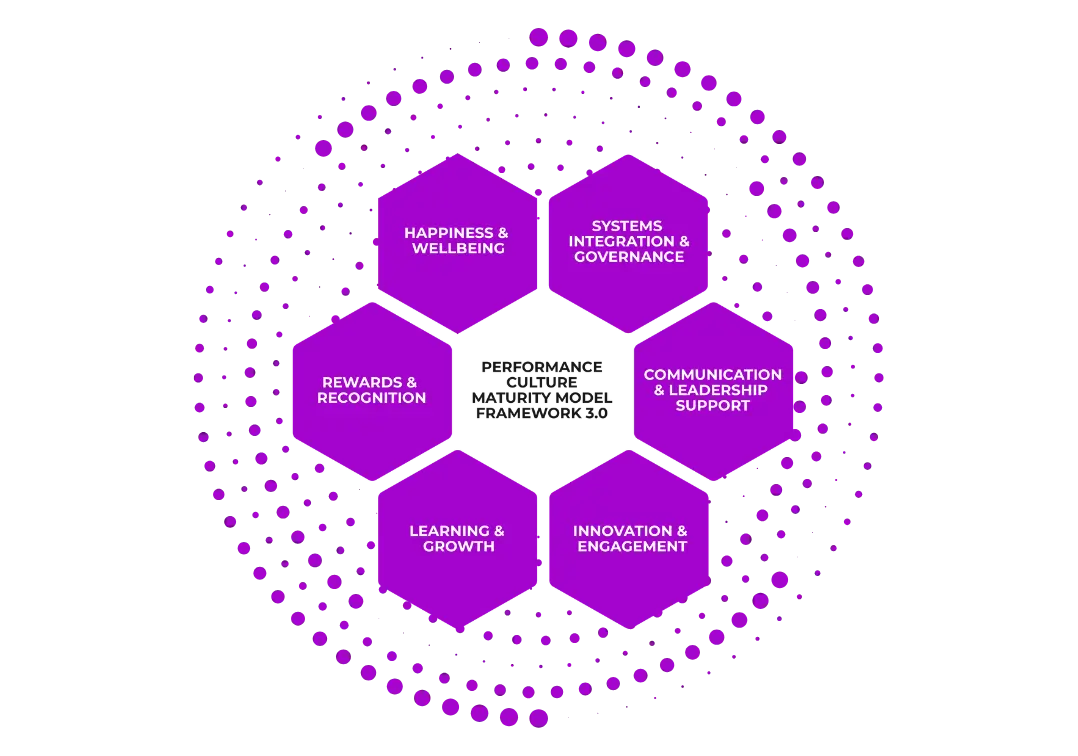
Unique frameworks for evaluating process and system complexity

The capability maturity models included in this section are relevant for an enterprise's corporate view. They can be accessed independently or as part of the Integrated Performance Maturity Model. Each framework is comprehensive, providing an in-depth scan of the capability targeted. However, when assessed together, additional insights related to alignment and synergies are revealed.
All GPAU Maturity Models share the same assessment methodology:
Explore GPAU Organizational Level Maturity Models

The Integrated Performance Management System Maturity Model provides a holistic assessment of the corporate level strategy and performance management system. It will include the evaluation of the following capabilities using their specific maturity models:
* Strategic Planning
* Performance Measurement
* Performance Improvement
* Employee Performance Management
* Performance Culture

The Strategic Planning Maturity Model evaluates the business planning ability of an organization, including:
* Clarity of mission, vision, and values
* Rigor of research and stakeholders engagement in planning, as well as the strategy horizon
* Articulation of strategy into measurable objectives, KPIs, and initiatives
* Strategy alignment across functions and integration with risk and sustainability
* Adaptability through foresight and contingency planning
* Governance, technology, communication and competencies of the strategy function

The Performance Measurement Maturity Model scans the Corporate KPI System by investigating:
* KPI selection approach
* Consistency and standardization of KPIs and metrics definitions
* Analytical rigor and collaboration behind target setting
* Reliability of performance data collection
* Ability to communicate insights through clear and impactful visuals
* Governance, technology, communication, and competencies of the performance measurement function

The Performance Improvement Maturity Model complements the performance measurement capability by outlining additional key areas:
* Depth and sophistication of data analysis for decision-making
* Performance reporting structure
* Decision-making practices
* Project management capability
* Learning from KPIs and leveraging grassroots innovation
* Governance, technology, communication, and skills that underpin a robust improvement capability

The Performance Culture Maturity Model evaluates how effectively an organization fosters a high-performance environment that aligns people, systems, and values. It assesses:
* Integration and governance of performance management practices across all levels
* Transparency and leadership commitment driving communication and strategy awareness
* Capacity to inspire creativity and involvement, to nurture employee engagement
* Investment in continuous professional development
* Approach to acknowledging and rewarding performance
* Ability to create a positive, supportive work environment promoting happiness & well-being for employees

The Employee Performance Management Maturity Model covers all stages of an employee performance cycle, looking into aspects as:
* Ability to define clear and measurable performance criteria, to align with corporate strategy
* Relevance of the evaluation structure
* Process and tools used to track and support employee performance
* Quality and frequency of performance discussions of evaluation and feedback practices
* Post-review actions foster development and capability growth
* Recognition mechanisms motivate and reward achievement
* Governance, technology, communication, and skills that sustain an effective employee performance management system

The Operations Performance Maturity Model is designed to address the specific characteristics of managing performance at the functional area level (division, department).
This assessment framework includes 5 key areas:
* Operational Planning
* Performance Measurement
* Performance Improvement
* Employee Performance Management
* Performance Culture.
Unlike the corporate level assessment, the 5 areas above cannot be evaluated separately.
The Employee Performance Management Maturity Model can be accessed separately or as part of the Integrated Performance Maturity Model. This framework is of interest especially for Human Capital professionals looking to bring more value to their stakeholders through the design of the employee evaluation system. A common choice among these professionals is to conduct the assessment using two models: Performance Culture and Employee Performance Management. Bringing together these capabilities in an assessment report can shed light on the alignment between corporate and individual performance management.

Explore GPA Unit’s thought-leadership magazine featuring insights, expert views, and frameworks advancing organizational maturity.
Our architecture for developing, operationalizing, and continuously improving the GPAU Maturity Models.
The CRI is the think tank and innovation lab of the GPA Unit. It explores new frontiers in strategy and performance management through academic research, business surveys, focus groups, and pilot projects.
It develops and tests maturity models, assessment tools, and methodologies that serve as the foundation for GPAU Standards and certifications.


The ISA acts as GPAU's standards authority - the guardian of credibility, independence, and trust.
The role of this body is to create the GPAU International Standards (GPAU-IS 91000 series) and establish accreditation frameworks for organizations, GPAU assessors, and instructors worldwide.
PEA is our educational arm, preparing professionals to use responsibly, and impactfully the GPAU International Standards and Maturity Models.
It deliveres certification and training programs for those interested in becoming GPAU Accredited Assessors, or Instructors. Moreover, its training portfolio is highly relevant for professionals and organizations interested to apply our maturity models internally and drive performance excellence.

The three institutions are interdependent and nurture performance excellence, through the vital role each plays for continuous improvementȘ
Hear from global leaders redefining excellence in strategy and performance management.
Scientific Advisory Board
This body serves as the expert body responsible for:
